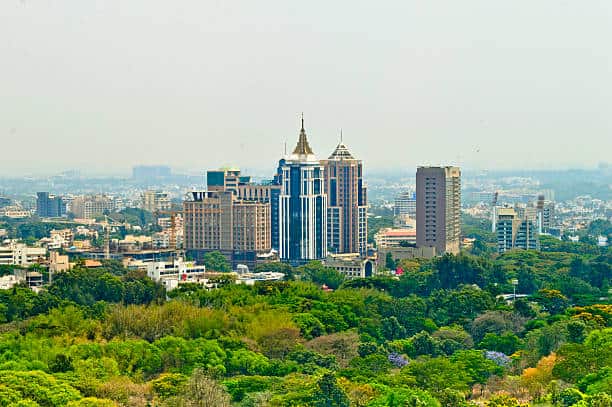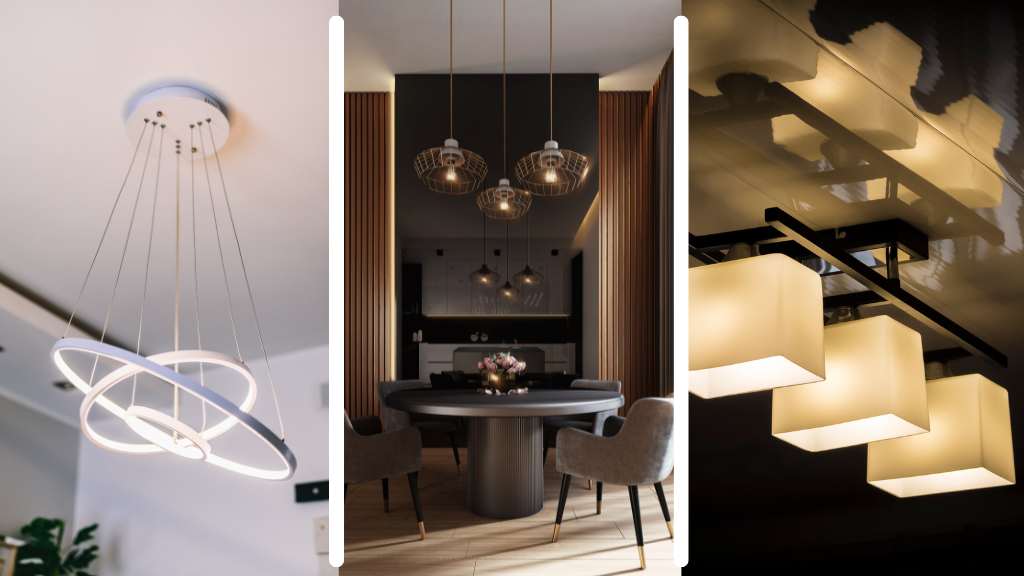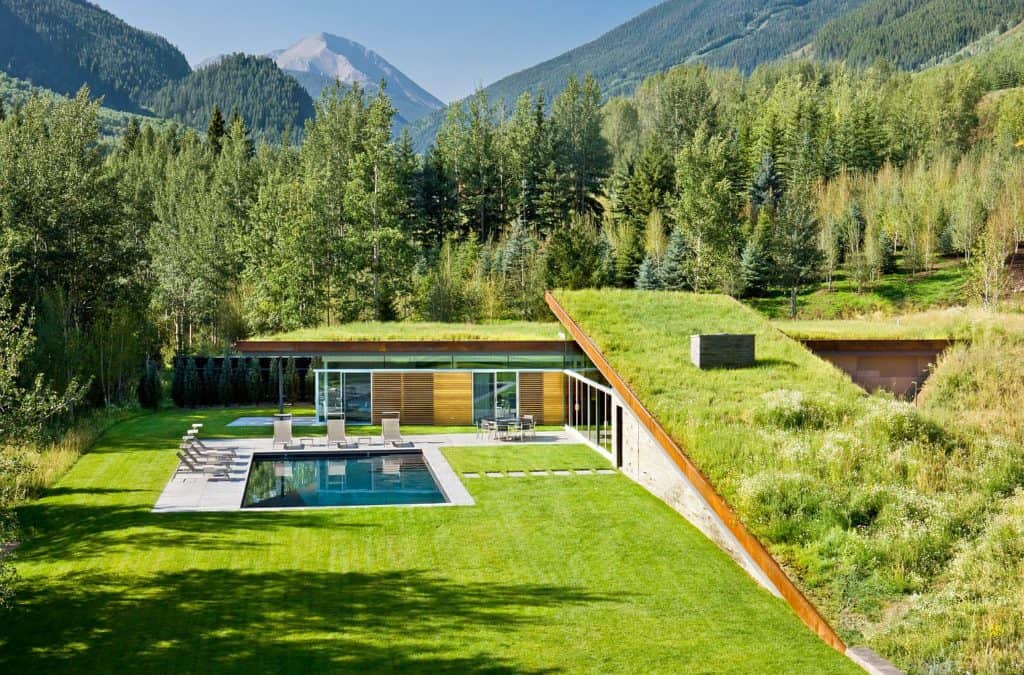
With the onset of issues like global warming, climate change, and erratic weather patterns, it only makes sense to start making small changes in how we operate on an individual level to create a better future for the coming generations. Since charity begins at home, building sustainable, eco-friendly houses with low waste generation could be step 1 on this path. Green, eco-friendly homes have gained massive popularity in the west over the past couple of years; it’s time for us in the east to reconnect with our roots too!
What Are Eco Friendly Houses?
An eco-friendly house can be defined as a house that is specifically designed to reduce carbon footprint and made using environmentally friendly materials. Eco-friendly houses also cause a low to no negative impact on the environment.
What Do Eco Friendly Houses Have?
Multiple elements are considered for a house to be called an eco-friendly house. A house/ building/ community featuring the following factors in any combination can be defined as eco-friendly:
Low Electricity Consumption: A home that consciously consumes less electricity brings down the percentage of carbon emission in the atmosphere, making it a green home.
Usage Of Green Construction Materials: An environmentally friendly home would minimize or limit the usage of toxic construction materials with chemical additives and would instead resort to non-toxic, renewable, and biodegradable materials.
Renewable Sources Of Energy: While a traditional home would rely on fossil fuels (a depleting natural source of energy), an eco-friendly home would only use eco-friendly, renewable energy alternatives like solar panels, biomass boilers, and heat pumps.
Energy Conservation: A house that tries to conserve energy not only by using renewable sources of energy but also through other methods like using energy-efficient products can be called an eco-friendly home. Most consumer products in India now come with star ratings that make the identification and purchase of energy-efficient appliances easier.
Water Conservation: Along with energy, an eco-friendly home would also make conscious efforts to conserve water by using methods like rainwater harvesting, low-flow taps, and water-conservation
Incorporation Of Smart Technology: Using smart technology like smart lights (lights that automatically turn off when nobody is in the room), further helps lessen carbon emission and limits the wastage of energy in eco-friendly homes.
How To Make My Current Home An Eco-Friendly Home? - Eco Friendly Home Features
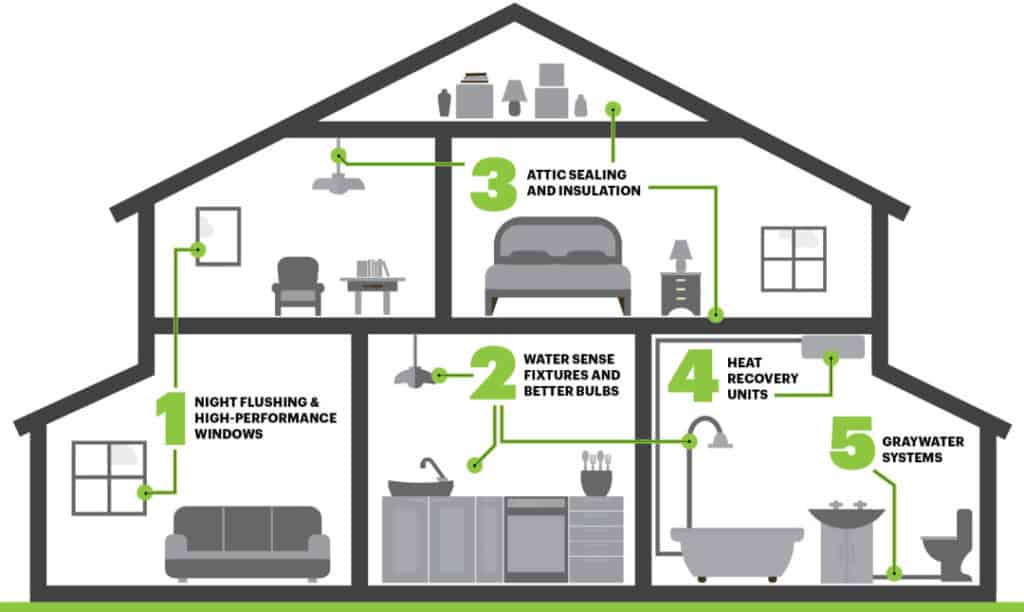
While it is true that most features of an eco-friendly home need to be incorporated at the time of building a house, you can still take some steps to convert your house into an eco-friendly house-
Make A Balcony/ Roof Garden: Find a nice sunny area on any of your home balconies/ or not on the roof and create a garden. Incorporation of greens in your environment is an important step to making your house eco-friendly as plants not only add oxygen but also reduce the influx of heat and hence ultimately help tame high energy consumption by ACs and coolers. Moreover, plants also add to the aesthetics of a home and a garden would always be a great location to host your friends for a BBQ party!
Consciously Harvest or conserve Rainwater: Each house can rather easily conserve and harvest the water used by taking very simple steps. For example, an old house with an old toilet system would spend as much as 11-26 liters of water on every single flush. However, if you switch to a new toilet system, you would be spending 6 liters per flush owing to new regulations (which still is a lot though). You could also have a rain harvesting system additionally installed in your already existing home in order to catch and reuse the rainwater for activities like car washing, watering the plants, flushing toilets, etc. There are also multiple showerheads and faucets designed for low consumption to conserve water that can be used to replace old sanitaryware.
Limit or Curb The Use Of Plastics: There already have been a lot of awareness campaigns that educate the masses about the negative impact each plastic item causes on the environment. With instances like the Great Pacific Garbage Patch becoming a reality of the world we live in, there cannot be enough emphasis on how absurd it is for us to still be okay with using plastic. Though it may not be practically possible to completely stop using plastic, owing to the fact that plastic is even an element of most clothes we wear, curbing single-use plastic should not be a problem. It should become one’s conscious effort to at least reduce, reuse, and recycle plastic. Efforts as simple as eliminating the use of plastic decor and cutlery for parties and carrying a cloth bag when you go shopping count.
Consider Installing Renewable Energy Sources: While mass-produced energy derived from fossil fuels may seem like an alternative energy source in the short term, it may make more sense to use smart energy sources for long-term benefits. Consider making small switches and installing modern heat pumps to heat and cool your home, photovoltaic solar panels and solar thermal panels on the rooftop, and perhaps, harnessing the power of the wind. It may seem like a big deal and a big expense at first but it should be noted that the Indian government, in fact, offers major subsidies to encourage people to install and adapt to renewable energy resources.
Small Efforts Go A Long Way: Miscellaneous other simple ways that can take you a step closer to making your house eco-friendly include simple actions like switching to LED bulbs, unplugging appliances when not in use, limiting the use of artificial light, and alternatively using sunlight during the day adopting to carpool or usage of public transport for travel.
What Are Passive House Design Techniques? - Eco Friendly Houses
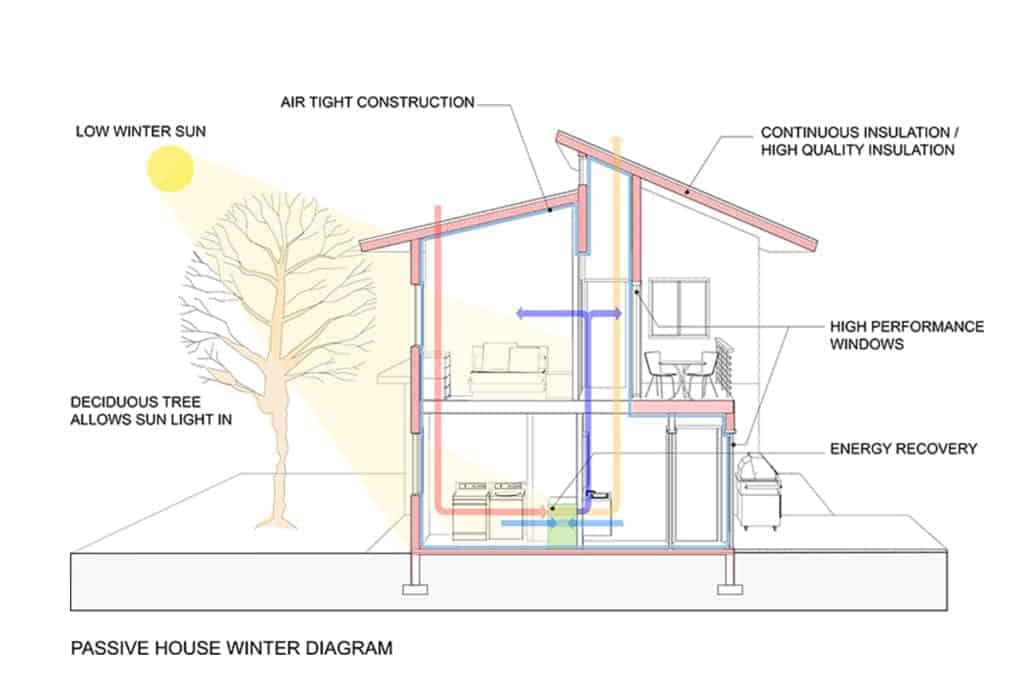
Passive House Design Techniques were invented in Germany in the 70s. Passive House design techniques were thoughtfully curated to leverage high-quality and high-performance materials during the construction of a house to deliver the best indoor comfort at low running costs.
An ultimate example of the best eco-friendly house design techniques, introduced by Passivhaus Standard, passive house design techniques include examples like using creative ways to cut direct sunlight from entering homes only in the summer. For example, designing window shades in such a manner that it stops the entry of direct sunlight from the high summer sun, but allows sunlight from. low-lying winter sun when actually required.
Another example of passive house design techniques, an eco-friendly home designing method includes using the indigenous wind direction to make one’s home cool during summers; as opposed to depending on an air conditioner or cooler. Houses in predominantly summer or tropical regions can be, as per such techniques, can be designed with huge windows to accommodate better ventilation that can correspond with the direction of the wind for naturally cool summer homes.
Final Thoughts On Eco Friendly Houses
Making your house as eco-friendly as possible is not only a cool thing to do but it also is rather necessary given the current depleting environmental situation of the earth. By incorporating eco-friendly solutions at the time of construction or even post-construction of your home, you can help enormously reduce your carbon footprint, a necessary sustainable approach we all need to adapt in order to offer a better future to coming generations.


